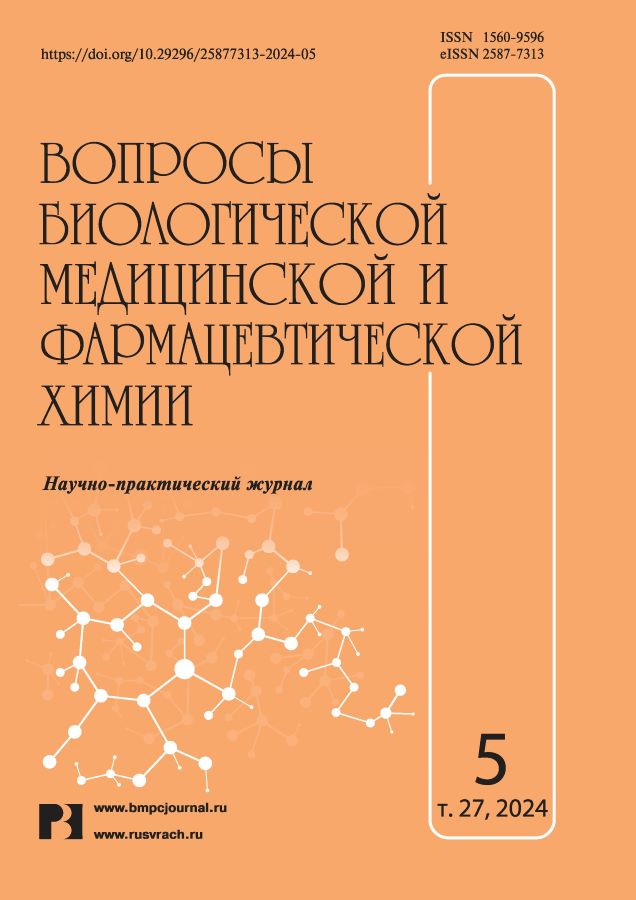Identification and quantification of flavonoids in medicinal plants growing in the Republic of Uzbekistan
- Authors: Leontiev V.N.1, Ignatovets О.S.1, Feskova A.U.1, Charnetskaya Y.G.1, Adamtsevich N.Y.1, Strakh Y.L.1, Mirzarakhmetova D.Т.2
-
Affiliations:
- Belarusian State Technological University
- Tashkent International Kimyo University
- Issue: Vol 27, No 5 (2024)
- Pages: 31-38
- Section: Pharmaceutical chemistry
- URL: https://journals.eco-vector.com/1560-9596/article/view/633120
- DOI: https://doi.org/10.29296/25877313-2024-05-04
- ID: 633120
Cite item
Abstract
Introduction. In recent years, the popularity of herbal medicine has been increasing. One of the most numerous classes of biologically active substances of plant origin are flavonoids, which have a wide range of biological activities: anticarcinogenic, antioxidant, antimicrobial, neuroprotective, immunomodulatory, hepatoprotective effects, and also capable of stimulating the damaged body tissues regeneration processes. The relevant area of the research is the search for medicinal plants with a high content of flavonoids for the development of herbal remedies with wound-healing activity. This problem can be solved through the use of plant raw materials from the Republic of Uzbekistan, which have a high content and a wide range of biologically active substances, thanks to the sharply continental climate of the country with consistently hot summers and increased levels of ultraviolet radiation.
The purpose of the research is to select medicinal plant raw materials as a source of flavonoids for the development of wound healing agents.
Material and methods. The object of the study was medicinal plant raw materials harvested on the territory of the Republic of Uzbekistan: oregano herb, sage leaves, St. John's wort herb, sandy everlasting flowers, bur beggar-ticks herb. Identification and quantification of flavonoids in the studied samples of medicinal plants was carried out using thin-layer chromatography, absorption spectrophotometry in the visible region using reaction with aluminum chloride and high-performance liquid chromatography-mass spectrometry.
Results. It has been established that the content of flavonoids in the herb of oregano, leaves of medicinal sage, St. John's wort herb, flowers of sandy everlasting, harvested in the Republic of Uzbekistan, is significantly higher than in medicinal plant materials harvested in the territory of the Republic of Belarus and the Russian Federation. Using the method of thin-layer chromatography and high-performance liquid chromatography-mass spectrometry, kaempferol-3-β-D-glucopyranoside was identified in the extract of sandy everlasting flowers, and isoquercitrin was identified in the extract of St. John's wort herb.
Conclusions. As a result of the research, sandy everlasting and St. John's wort, growing on the territory of the Republic of Uzbekistan, were selected as the sources of flavonoids (glycoside kaempferol and isoquercitrin) with regenerating properties for the development of wound healing agents.
Full Text
About the authors
V. N. Leontiev
Belarusian State Technological University
Author for correspondence.
Email: chernetskaya@belstu.by
Ph.D. (Chem.), Head of the Department of Biotechnology
Belarus, MinskО. S. Ignatovets
Belarusian State Technological University
Email: chernetskaya@belstu.by
Ph.D. (Biol.), Associate Professor
Belarus, MinskA. U. Feskova
Belarusian State Technological University
Email: chernetskaya@belstu.by
Ph.D. (Eng.), Senior Researcher, Department of Biotechnology
Belarus, MinskYu. G. Charnetskaya
Belarusian State Technological University
Email: chernetskaya@belstu.by
Ph.D. (Pharm.), Associate Professor, Department of Biotechnology
Belarus, MinskN. Yu. Adamtsevich
Belarusian State Technological University
Email: chernetskaya@belstu.by
Ph.D. (Biol.), Senior lecturer, Department of Biotechnology
Belarus, MinskYa. L. Strakh
Belarusian State Technological University
Email: chernetskaya@belstu.by
Assistant, Department of Biotechnology
Belarus, MinskD. Т. Mirzarakhmetova
Tashkent International Kimyo University
Email: chernetskaya@belstu.by
Dr.Sc. (Eng.), Professor, Department of "Chemistry and Biology"
Uzbekistan, TashkentReferences
- Samylina I.A., Sorokina A.A., Morohina S.L. Atlas lekarstvennyh rastenij i syr'ja. M.: GJeOTAR – Media, 2020; 207 s.
- Korul'kin D.Ju., Abilov Zh.A., Muzychkina R.A., Tolstikov G.A. Prirodnye flavonoidy. Novosibirsk: Akademicheskoe izdatel'stvo «Geo», 2007; 232 s.
- Andersen О.M., Markham K.R. Flavonoids: chemistry, biochemistry and applications. Boca Ratton, CRC Press, 2006; 1197 р.
- Tarahovskij Ju.S., Kim Ju.A., Abdrasilov B.S., Muzafarov E.N. Flavonoidy: biohimija, biofizika, medicina. Pushhino: Sunchrobook, 2013; 310 c.
- Panche A.N., Diwan A.D., Chandra S.R. Flavonoids: an overview. Journal of Nutritional Science. 2016; 5: 1–15.
- Muhammad Shahzad Aslam et al. Role of Flavonoids as Wound Healing Agent [Electronic resource]. Intechopen.com. URL: http://dx.doi.org/10.5772/intechopen.79179 (date of access: 02.10.2023).
- Bhatia N., Singh A., Sharma R., et al. Evaluation of burn wound healing potential of aqueous extract of Morus alba based cream in rats. The Journal of Phytopharmacology. 2014; 3 (6): 378–383.
- Ambiga S., Narayanan R., Gowri D., et al. Evaluation of wound healing activity of flavonoids from Ipomoea Carnea Jacq. Ancient Science of Life. 2007; 3: 45–51.
- Stimulation of neuroregeneration by flavonoid glycosides [Electronic resource] – Mode of access: www.google.com/ patents/US20120087980. Date of access: 02.10.2023.
- Makarova D.L., Velichko V.V. Izuchenie syr'ja «Dushicy trava» razlichnyh proizvoditelej. Medicina i obrazovanie v Sibiri. 2015; 4.
- Popova O.I., Nikitina A.S., Azrjakova E.A. Kolichestvennoe opredelenie summy flavonoidov v trave shalfeja muchnistogo (Salvia farinacea benth.). Farmacija i farmakologija. 2016; 4;1: 55–65.
- Opredelenie fenol'nyh soedinenij v rastitel'nyh ob’ektah, javljajushhihsja biofarmacevticheskim syr'em [Jelektronnyj resurs]. URL: https://www.elibrary.ru/download/elibrary_36477184_52832620.pdf (data obrashhenija 05.10.2023).
- Adamcevich N.Ju., Fes'kova E.V., Boltovskij V.S., Titok V.V., Leont'ev V.N. Vydelenie flavonoidov iz cvetkov bessmertnika peschanogo. Vesnіk VDU. 2021; 4: 23–30.
Supplementary files











